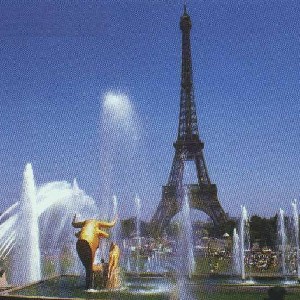The Web Museum, Paris
The Web Museum was created by Nicolas Pioch, an enthusiast, in 1994, and is an archive of several thousand artistic works by more than 300 artists from Europe and, to a lesser degree, the United States and Japan. Spanning the period between the 13th century (Gothic) and the present, the collection offers a reasonably comprehensive selection of the paintings of the major artists in Europe. Only a few scattered examples of work beyond paintings or sketches are available here.
The collection is arranged both alphabetically by author and thematically (Gothic, Romanticism, Impressionism). Each artist’s page typically contains 8 to 10 images from his or her work presented as thumbnails that can then be enlarged. More famous or popular artists such as Vincent van Gogh have as many as 100 images available. Each artist’s page includes a biography of variable length that highlights his or her contribution to the history of European art and important moments of the artist’s life. Biographies also contextualize the artist’s work within the events of the artist’s life and prevailing artistic trends. Many of the individual images include 100- to 200-word descriptions of the particular work.
In addition to individual artist pages, the site includes thematic pages with 250- to 2,000-word essays on a particular artistic movement. Thus, Impressionism is described in a 1,500-word essay that begins with a basic definition of Impressionism, situates the Impressionists in their historical and artistic context, and offers a few sample images to illustrate particular points.
Also included are two very rich special exhibitions—one on the life and work of Paul Cezanne, and the other on the medieval illuminated manuscript, the Très riches heures du Duc de Berry [The Very Rich Hours of the Duke de Berry]. This latter exhibition works especially well as a teaching tool because the site offers clear and accessible descriptions of what illuminated manuscript were, why they were created, how the illuminations were produced, what sort of materials were used in the making of the manuscripts, and how such manuscripts were used by their owners.
Perhaps the greatest strength of the Web Museum site as a teaching tool is the interlinking of text within the site. Many of the essays and artist biographies contain one or more links to other, related artists, or to terminology (such as “parchment” or “romanticism”). This feature encourages students to see the connections between artists, rather than to view each artist as a person working in isolation from others. Students should be encouraged to pursue such links as they conduct their research in the collection.
For instructors in world history, this site poses a particular challenge. Because the site offers a very Eurocentric presentation of the history of art, the interlinking texts that are the best feature of the site weave a Euro-Atlantic web of knowledge that takes little notice of developments in art around the world and more importantly, offers little insight into non-European influences on the artists whose work is presented here. Students using this site will need to be challenged to find such connections either embedded in the texts, in the works themselves, or through additional research elsewhere. Another unfortunate weakness of the site is the lack of a search feature. As a result, students will need to know at least something about who or what they are looking for or they will find it difficult to know where or how to begin.
Although the material presented here is not in the public domain, the site grants permission to students and teachers to use the images and texts for educational purposes.
